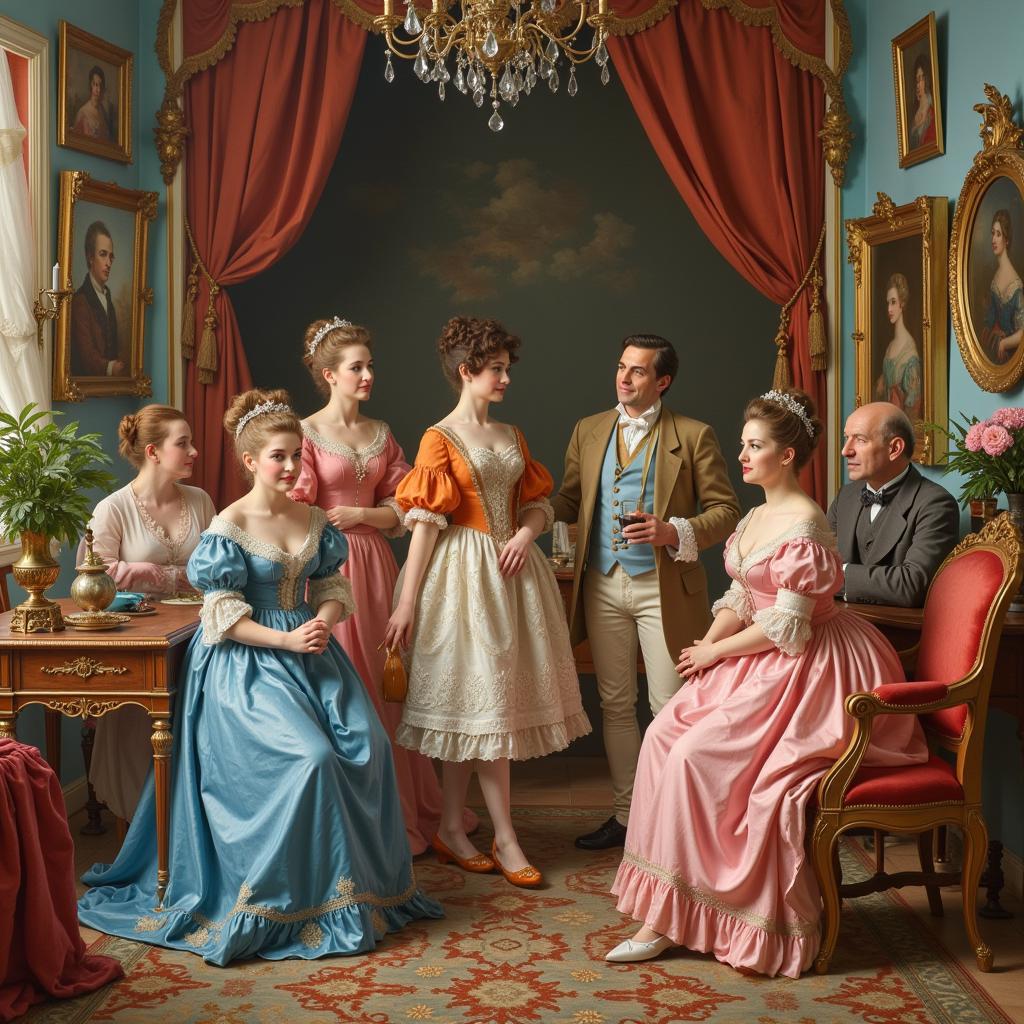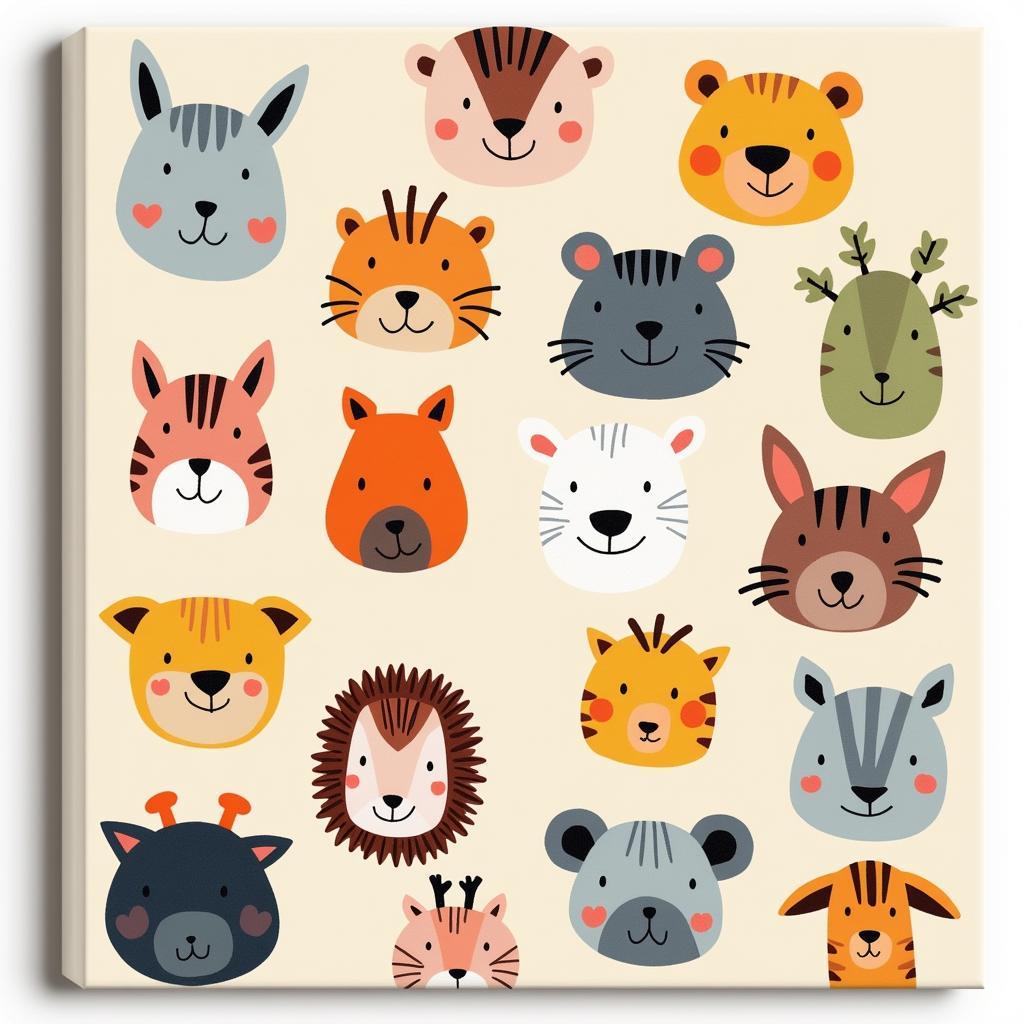Exploring the Allure of Antique French Art
Antique French Art evokes a sense of timeless elegance and rich cultural heritage. From the grandeur of Rococo paintings to the delicate intricacies of Art Nouveau furniture, antique French art offers a captivating glimpse into the artistic evolution of France. This article delves into the fascinating world of antique French art, exploring its various forms, historical context, and enduring appeal. After reading this, you may even want to look into large french poster art for your home!
A Journey Through Time: Understanding the History of Antique French Art
French art has always held a prominent place in the global art scene. Each era, from the medieval period to the 20th century, has contributed unique styles and movements that collectively define antique French art. The opulence of the French monarchy, the intellectual ferment of the Enlightenment, and the social upheavals of the modern era have all left their mark on the artistic landscape. Understanding this historical context is crucial to appreciating the nuances and significance of antique French art. For those interested in how to view art from a non-artist perspective, this article may be helpful: how to appreciate art when you are not an artist.
Key Periods and Styles in Antique French Art
- Medieval Art (c. 5th – 15th centuries): Characterized by Romanesque and Gothic styles, this period saw the creation of magnificent cathedrals, illuminated manuscripts, and sculptures, often imbued with religious symbolism.
- Renaissance Art (c. 14th – 16th centuries): Influenced by Italian Renaissance ideals, French artists embraced humanism and classical forms, leading to a flourishing of painting, sculpture, and architecture.
- Baroque and Rococo Art (c. 17th – 18th centuries): Known for their extravagance and ornamentation, these styles reflected the power and luxury of the French court. Baroque art emphasized drama and grandeur, while Rococo favored lightness, asymmetry, and pastel colors.
- Neoclassicism and Romanticism (c. 18th – 19th centuries): Neoclassicism sought to revive the classical ideals of order and harmony, while Romanticism emphasized emotion, individualism, and the beauty of nature.
- Impressionism and Post-Impressionism (late 19th century): These revolutionary movements broke away from traditional academic art, focusing on capturing fleeting moments, subjective perspectives, and the effects of light and color.
- Art Nouveau and Art Deco (late 19th – early 20th centuries): Art Nouveau embraced organic forms and intricate ornamentation inspired by nature, while Art Deco celebrated geometric shapes and modern materials. If you are intrigued by this era’s aesthetics, explore this resource about Art Nouveau style interior design: art nouveau style interior design.
 Antique French Rococo Painting – Depicting a scene of courtly life
Antique French Rococo Painting – Depicting a scene of courtly life
What Makes Antique French Art So Desirable?
The allure of antique French art lies in its exquisite craftsmanship, historical significance, and unique aesthetic qualities. Each piece tells a story, connecting us to the past and offering a glimpse into the lives, beliefs, and artistic sensibilities of generations past.
Investing in Antique French Art
Collecting antique French art can be a rewarding experience, both aesthetically and financially. However, it requires careful consideration and research. Authenticity, provenance, and condition are crucial factors that determine the value of a piece. Consulting with reputable art dealers and experts is highly recommended for novice collectors.
Identifying and Authenticating Antique French Art
Determining the authenticity of antique French art can be challenging. Look for hallmarks, signatures, and other identifying marks. Examine the materials, construction techniques, and overall style to assess its age and origin. Researching comparable pieces and consulting with experts can provide valuable insights. You might also be interested in vintage swan art. Check it out here: vintage swan art.
Where to Find Antique French Art
Antique shops, auction houses, and online marketplaces are all potential sources for acquiring antique French art. France itself boasts numerous antique markets and fairs, offering a rich selection of treasures waiting to be discovered. Building relationships with reputable dealers and attending specialized events can enhance your chances of finding authentic and valuable pieces. Have a look at large french poster art for inspiration.
Conclusion: The Enduring Legacy of Antique French Art
Antique French art continues to captivate and inspire, offering a window into a rich and complex cultural heritage. From the grandeur of royal palaces to the intimate charm of everyday objects, antique French art reflects the artistic genius and creativity of generations of French artists. By understanding its history, appreciating its aesthetic qualities, and engaging with its enduring legacy, we can deepen our connection to this remarkable artistic tradition. Are you intrigued by the world of ceramics? You might enjoy exploring the artistry of mikasa potters art.
FAQ
-
What are the most popular periods for antique French art?
Renaissance, Baroque, Rococo, and Art Nouveau are among the most sought-after periods. -
How can I tell if a piece of antique French art is authentic?
Look for hallmarks, signatures, and consistent style elements. Consult with reputable experts. -
Where can I buy antique French art?
Antique shops, auction houses, online marketplaces, and antique fairs in France. -
What factors determine the value of antique French art?
Authenticity, provenance, condition, rarity, and artistic merit. -
How should I care for antique French art?
Consult with a conservator for appropriate cleaning and preservation methods. -
What are some resources for learning more about antique French art?
Museums, art books, scholarly articles, and reputable online databases. -
Is investing in antique French art a good idea?
It can be, but requires careful research and understanding of the market.
Common Scenarios and Questions
Scenario: You inherit a piece of furniture believed to be antique French.
Question: How can I verify its authenticity and value?
Scenario: You are interested in starting a collection of antique French paintings.
Question: What are some tips for beginner collectors?
Further Exploration
Explore our other articles on related topics, such as French Impressionism, Art Deco furniture, and the history of French porcelain.
Contact Us
For further assistance or inquiries, please contact us:
Phone: 02462573573
Email: danteum@gmail.com
Address: Savico Megamall, 7-9 Đ. Nguyễn Văn Linh, Gia Thụy, Long Biên, Hà Nội 10000, Việt Nam.
We offer 24/7 customer support.

